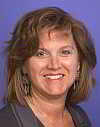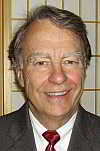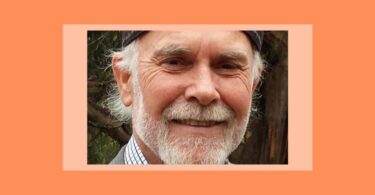A useful article about Academy of Classical Homeopathy Faculty Members.Full details about Academy of Classical Homeopathy Faculty Members
 The faculty:
The faculty:
Nick Nossaman, MD, DHt has been practicing homeopathy since 1976 in Denver, Colorado. He is board certified in homeopathic medicine. Nick is a former board member and president of the National Center for Homeopathy, a former board member and president of the American Institute of Homeopathy, and a  member of the Rhus Tox study group of Homeopatia Internationalis for over 20 years.
member of the Rhus Tox study group of Homeopatia Internationalis for over 20 years.
Polly Millet, MSN, ARNP began her study of homeopathy with the Lake County (FL) Study Group, affiliated with the National Center for Homeopathy, in 2002. She got “hooked” and graduated in 2009 from the Academy of Classical Homeopathy. Having served for three decades as a professor of nursing, Polly teaches Human Health Sciences at the Academy.
 Ann Jerome, PhD, CCH, RSHom(NA) is founder and director of the Academy of Classical Homeopathy. A graduate of Yale and Brown Universities, she has taught for thirty-five years and turned her attention from her college professorship to homeopathy in 1994. Ann is a past board member of the Council for Homeopathic Certification and currently serves as Dean of Education and a board member of the National Center for Homeopathy.
Ann Jerome, PhD, CCH, RSHom(NA) is founder and director of the Academy of Classical Homeopathy. A graduate of Yale and Brown Universities, she has taught for thirty-five years and turned her attention from her college professorship to homeopathy in 1994. Ann is a past board member of the Council for Homeopathic Certification and currently serves as Dean of Education and a board member of the National Center for Homeopathy.
 Molly Punzo, MD, an internist-turned-homeopath, served as attending physician in the emergency room of a Level 1 trauma hospital for five years and in numerous intensive/critical care units. She has practiced homeopathy for over ten years. Molly co-founded and directed the Integrative Medicine Department at Hartford Hospital before moving to Easton, MD, where she is currently Chief Quality Officer for Shore Health System. She also serves as a National Center for Homeopathy board member.
Molly Punzo, MD, an internist-turned-homeopath, served as attending physician in the emergency room of a Level 1 trauma hospital for five years and in numerous intensive/critical care units. She has practiced homeopathy for over ten years. Molly co-founded and directed the Integrative Medicine Department at Hartford Hospital before moving to Easton, MD, where she is currently Chief Quality Officer for Shore Health System. She also serves as a National Center for Homeopathy board member.
//
The Interview
Kathleen Raskin: When we go to conferences and seminars, I think too often we hear of the miracles, the perfect cases cured with one remedy. Can you give me an example of a failed/problematic case or a case that took twists and turns? We could learn from how you figured out the error, how you proceeded, and what you learned from the case.
Nick Nossaman: There are too many failed cases to enumerate. Very early in my learning, I once gave Sulphur 1M to a teenager with severe eczema, and he had a terrible aggravation for which I didn’t provide a satisfactory resolution. Andre Saine’s example inspired me to avoid self recrimination and despair when the correct remedy is not yet found, just persist and try to view it with as new eyes as possible. I would add: also to feel the feelings associated, then get back up and get on the horse.
I have one patient for whom I have been prescribing for 30 years, and she remains rail thin, very sensitive to innumerable things and very anxious about her health, but wants to continue to come for treatment, which usually proves to be palliative. She refuses referral to anyone else, so I keep trying the “new eyes” approach. For another woman with a different story, whom I’ve been seeing for about the same number of years—-with incremental help, but the same basic issues—I finally found the remedy, which has helped her dramatically. Three decades!
Polly Millet: What comes to mind is the case where I first learned to REALLY consider a constitutional remedy for a situation that looks acute. The problem was diarrhea with cramping and coldness that came on with a vengeance during a stressful time for the young man. After a quick repertorization I gave Arsenicum 30C which seemed clearly indicated by the current symptoms, and was surprised at there being no result. Later that day I tried Sulphur 30C, which was the next best from the repertorization. There was a little more solid stool, but the cramps persisted. At that point I took a more thorough case and based on the widest totality, found his constitutional remedy to be Silica. When he went immediately to sleep after taking the remedy, I knew we were on to something, and his symptoms resolved overnight.
Ann Jerome: Homeopathy (like parenting) is one of the things in life that is guaranteed to keep one humble, if one’s paying attention. There are many failed cases – because I can’t see the case clearly, or I don’t know enough materia medica, or the person falls away from homeopathy for whatever reason so there’s not enough follow-up time to make a difference. The ones who are always foremost in my mind were helped enough to keep coming, but I knew they could do better if only I could find an even more similar remedy. One of these, for example, was a woman in her late 70’s whose blocked arteries cleared with Argentum nitricum, but a couple of years later she began to develop senile dementia – perhaps an unavoidable part of her aging, but I wondered if a better remedy or better case management could have prevented it.
The honest homeopath, the one who’s committed to growing and learning all his or her life, will always feel they could do better. We often overlook how destructive this aspect of homeopathic practice can be. The best homeopaths, in fact, can become the most discouraged and can turn away from homeopathy.
So what have I learned from this? I’ve learned that to survive as an always-learning, honest homeopath, we have to:
· Give each case our full attention so we know we’ve always done the best we could with what we knew at the time.
· Recognize that we are only one aspect of the person’s destiny.
· Maintain a sense of humor and an active, fulfilling life along with our homeopathy.
· Accept that the vital force knows better than we do.
Molly Punzo: I am thinking of at least two cases that I worked for a year or more trying desperately to come up with the strange, rare, and peculiar remedy only to ultimately cure the case with Sulphur and in another case, good old Pulsatilla! I had spent years and lots of money traveling to strange, rare, and peculiar homeopathic seminars that made it seem as if, unless you selected a remedy that no one had heard of before, ANYTHING, other than a polycrest, you were a has-been mediocre homeopath. The Sulphur case was a case of Crohn’s disease and the Pulsatilla was an amenorrhea case with infertility. I can’t even recall how many bizarre remedies I had chosen to give first. Thank goodness those patients stuck with me through that “phase” of my homeopathic experience! I learned that sticking with the fundamentals and the good old classical “Hahnemannian” approach to homeopathy was best. That’s not to say there aren’t some wonderful rare prescriptions out there or remedies that have been more recently proven, that work wonders. The thing is to prescribe based on the Law of Similars and the true totality of the symptoms…which includes the generals and yes, the physical symptoms as well. Prescribing based on just the mentals or just any one side of the case alone will more often than not send you off in the wrong direction! I think of Picasso; he was a masterful realistic painter before he ventured off to his more abstract days. Master the basics…I mean REALLY master the basics first. That should take the bulk of your professional life. Then maybe we will know enough to begin to venture outside the boundaries of what we have already mastered. And then again, maybe not!
Kathleen Raskin: Can you tell me about an “ah-ha” moment?
Nick Nossaman: Homeopathy is full of “ah-ha” moments for both homeopaths and patients. I saw a woman who was suffering from an environmental poisoning in her house and who described her oppressive mother from whom she felt she had no escape. When I reflected on the parallel between the toxic mother and the toxic home, she began to sob at her realization that the poison was a substitute for the mother in her state of powerlessness and vulnerability. It was an emotional release for her — an experience of the homeopathic principle in the consulting room.
There are many surprising “ah-ha” moments when I read the materia medica of a medicine which I usually don’t think of in connection with a particular problem and am surprised to discover that it has symptoms (particulars) which I had no idea about and which describe the patient to a tee. I’m not a great materia medica scholar and only learn it when the patient is in front of me.
Polly Millet: A great “ah-ha” moment for me came during the last class weekend of our second year at the Academy. At that point we thought we were beginning to get the hang of this, but we were having trouble finding the remedy for the last case we were discussing in class. The person in the case was feeling stuck at a certain point in her life and had symptoms every time she tried to move forward. She held several jobs at the same time because she worked better under pressure. Finally we learned that Bryonia was the remedy that had changed her life – she was worse from motion and better from pressure! I drove home after that class laughing and shaking my head. Finally I was seeing the whole picture of a remedy – the essential characteristic features and the totality. A whole new world was opening before me!
Ann Jerome: “Ah-ha” moments brought me into homeopathy. First was the one with Belladonna and my three-year-old son, an immediate and undeniable curative reaction during a fever. From that moment, I knew that homeopathy was real and that it worked. Then came the one when I first read George Vithoulkas’ The Science of Homeopathy, in which he suggests (pardon my paraphrase) that the only sensible way to care for illness is to start with a vision of what health is. My “ah-ha” was that any action without an understanding of the philosophy behind it is nonsensical – and further, that homeopathy works from a clear, consistent, and comprehensible philosophy, something I had never encountered in medical care. “Health” began to mean more to me than it ever had before.
Kathleen Raskin: Do you have any favorite animal cases?
Nick Nossaman: I had a 14 year old cat with a cranky disposition (bit me on top of my head when I was doing the salute to the sun in my yoga practice) but nonetheless indomitable and somehow appealing spirit, who stopped eating and drinking and lost weight. We made a reluctant journey to the vet and got some lab tests which showed liver failure and kidney failure. “Nothing to be done, he’s just too old,” said the vet. So I prescribed Lycopodium 200c and he lived for two more years.
Polly Millet: A couple of weeks ago, I was at work (teaching nursing) when we had a short rain and wind storm as happens just about every afternoon in Florida. One of the students brought in a fledgling blue jay that apparently had been blown from his nest in the storm. He had suffered a blow to his head; one eye was swollen shut, and he was very quiet in the blanket she had wrapped around him. I dissolved some Arnica 30C in water and had to pry the bird’s mouth open to put a few drops in. He immediately poked his beak straight up in the air, closed his good eye, and went to sleep! About 20 minutes later, he opened both eyes equally and stretched his beak willingly for his next dose. This time he remained awake but stayed still, which I found unusual for a wild animal – he seemed to be badly hurt, and I wondered if he could recover. About 30 minutes later, the student brought him back to me and I gave him another dose, whereupon he leapt from the blanket to hop-jump-fly around my office! He was ready for release, and my students got their first exposure to homeopathy.
Ann Jerome: Some neighbors of mine had two cats that were out in the front yard when one of them was attacked by a dog and seriously injured at the base of her spine. The vet said that the cat would not walk again, but with Hypericum, she recovered full function in two weeks.
But the real problem was with her cat-friend, who was not injured but witnessed the attack and then watched her best buddy be carted off, not to return until a few days later smelling of veterinary hospital, antiseptic, bandages, and goodness knows what else. The uninjured cat became nearly feral, hissing at her cat-friend and her owners and refusing to come inside or to be petted, and not eating even when her owners left food outside for her. Three weeks after the dog attack, the injured cat was fine thanks to the Hypericum, but the other one had lost weight and was still hissing and darting under the house whenever anyone approached her. I used a few rubrics to describe what I thought this cat might be experiencing – Ailments from fright, Ailments from deceived friendship, Ailments from disappointed love, Aversion to company, Appetite wanting – and chose Ignatia for her, leaving it in her water dish. Her owners watched her approach and drink some, and within a day she was back to her old self entirely. It’s a favorite case of mine because homeopathy reunited a whole human-and-cat family.
 The faculty:
The faculty: member of the Rhus Tox study group of Homeopatia Internationalis for over 20 years.
member of the Rhus Tox study group of Homeopatia Internationalis for over 20 years. Ann Jerome, PhD, CCH, RSHom(NA) is founder and director of the Academy of Classical Homeopathy. A graduate of Yale and Brown Universities, she has taught for thirty-five years and turned her attention from her college professorship to homeopathy in 1994. Ann is a past board member of the Council for Homeopathic Certification and currently serves as Dean of Education and a board member of the National Center for Homeopathy.
Ann Jerome, PhD, CCH, RSHom(NA) is founder and director of the Academy of Classical Homeopathy. A graduate of Yale and Brown Universities, she has taught for thirty-five years and turned her attention from her college professorship to homeopathy in 1994. Ann is a past board member of the Council for Homeopathic Certification and currently serves as Dean of Education and a board member of the National Center for Homeopathy. Molly Punzo, MD, an internist-turned-homeopath, served as attending physician in the emergency room of a Level 1 trauma hospital for five years and in numerous intensive/critical care units. She has practiced homeopathy for over ten years. Molly co-founded and directed the Integrative Medicine Department at Hartford Hospital before moving to Easton, MD, where she is currently Chief Quality Officer for Shore Health System. She also serves as a National Center for Homeopathy board member.
Molly Punzo, MD, an internist-turned-homeopath, served as attending physician in the emergency room of a Level 1 trauma hospital for five years and in numerous intensive/critical care units. She has practiced homeopathy for over ten years. Molly co-founded and directed the Integrative Medicine Department at Hartford Hospital before moving to Easton, MD, where she is currently Chief Quality Officer for Shore Health System. She also serves as a National Center for Homeopathy board member.





